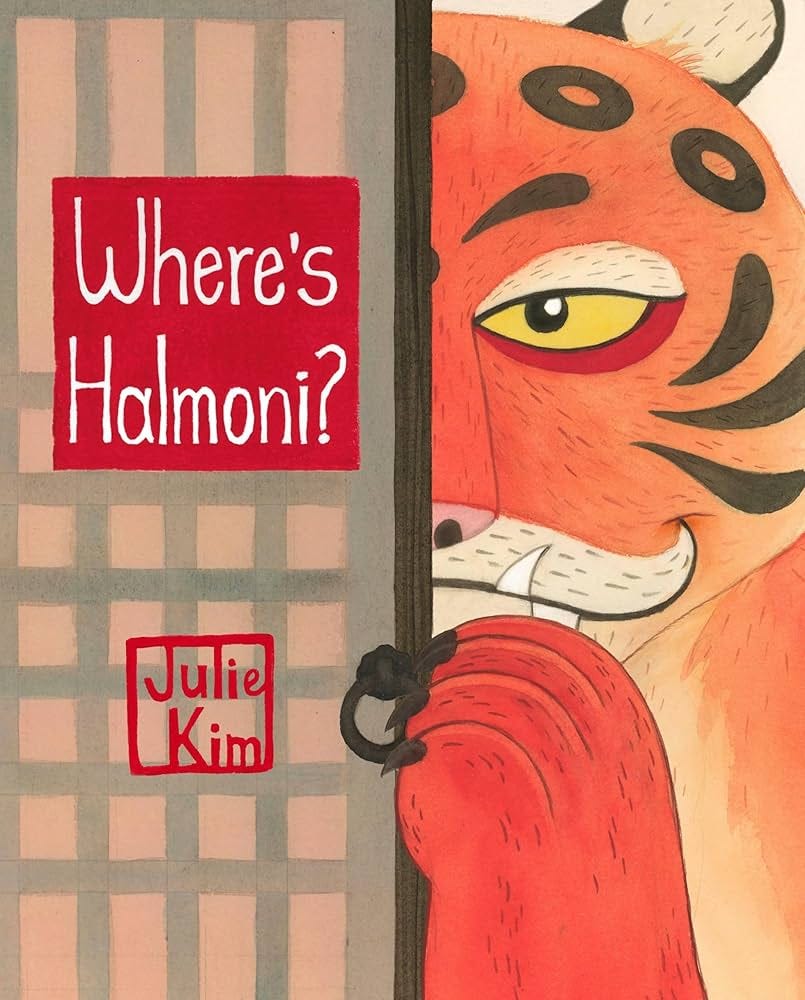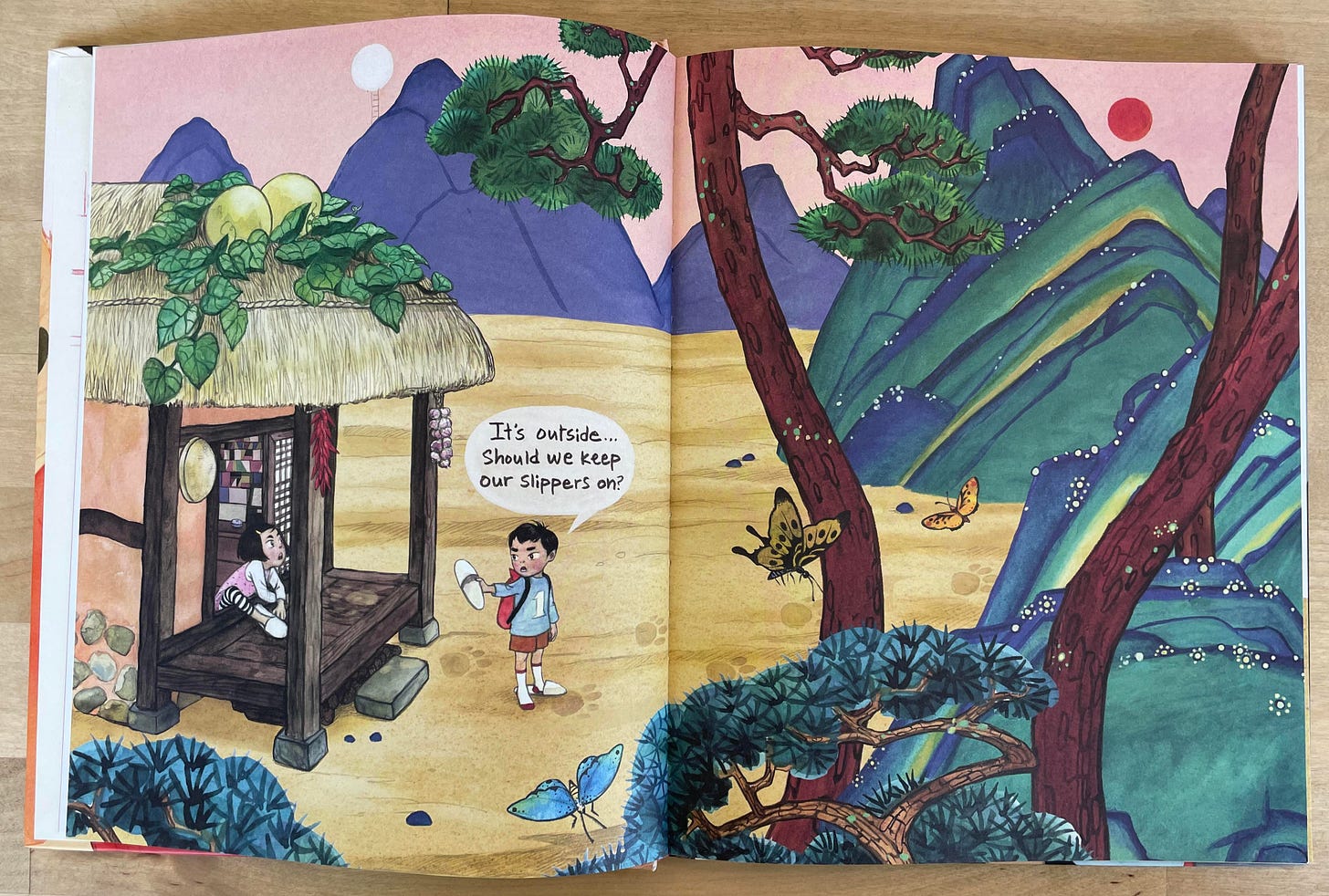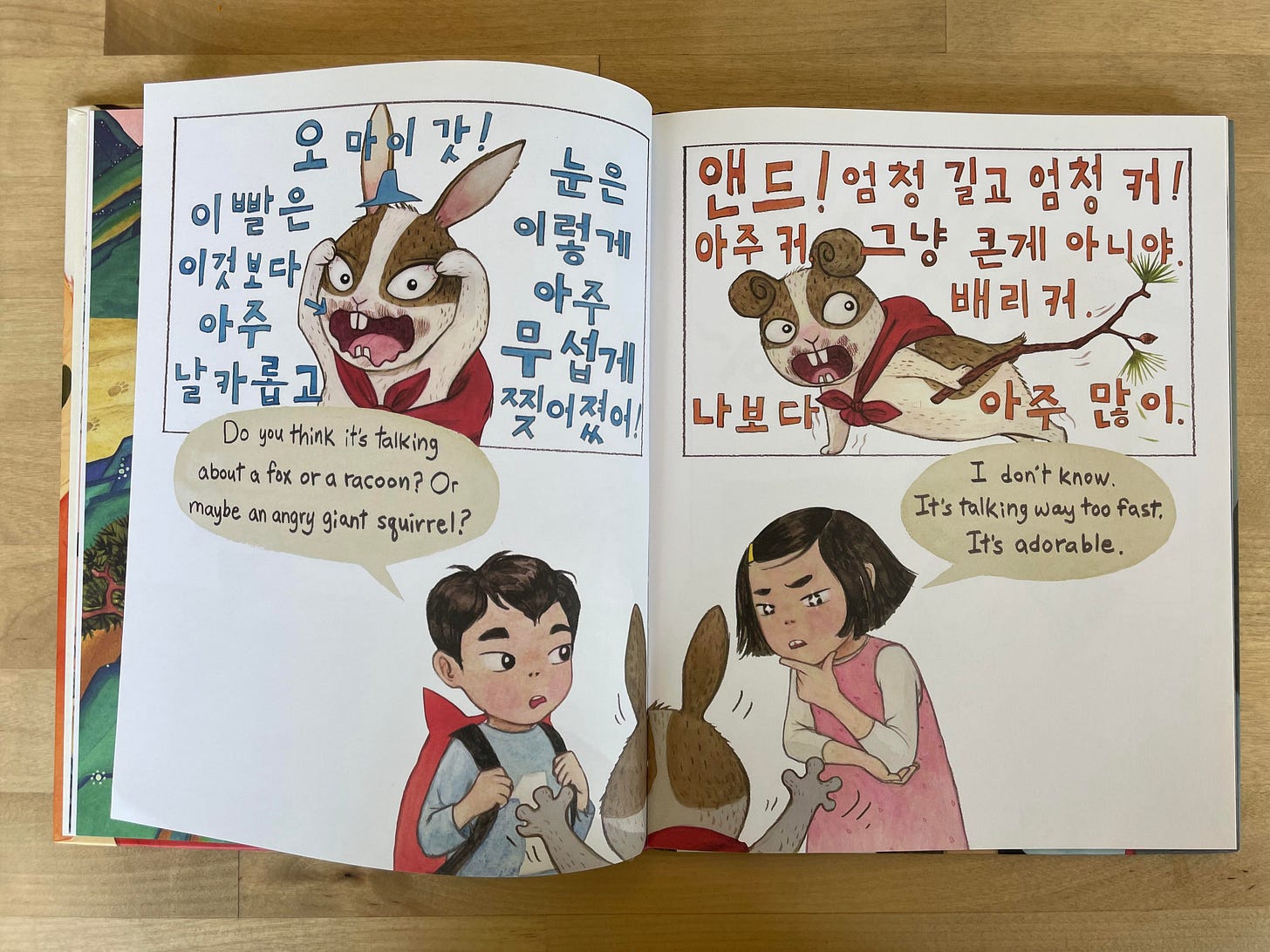There’s a moment early in Julie Kim’s gorgeous, mythical “Where’s Halmoni?” where its two young protagonists find something new. They’re searching for their grandmother (the titular Halmoni), and can’t find her anywhere in the house. But hey, what’s that in the corner? That closet didn’t used to be there. Let’s open it and…
Oh… that wasn’t a closet. It was a portal to a world of Korean folk tales. Joon, one of the protagonists, asks, “Should we keep our slippers on?”
The primary joy of “Where’s Halmoni?” and its sequel, “Where’s Joon?” is in figuring out just how this new place works alongside Joon and his sister, Jin. The books are an ode to adventure, problem-solving and wonder. To discover what’s new, Jin and Joon will have to decipher what’s old. What follows are the kind of epic journeys you imagined you were on as a kid, and that you wish you could go on as an adult.
The books are graphic novels (novellas, really), which I know is a nonstarter for some. But come on, live a little! The illustrations are detailed but easy for a younger reader to make out. The faces are expressive, the action is telegraphed, and the landscapes are technicolor. The books also feel great to hold -- they’ve got tight binding, thick pages, and bold ink. They’re objects that feel substantive; you could give them as a gift and not worry you were too slight in your selection.
The plot of each book is similar: Joon and Jin search for something amid a fantasia of mischievous rabbits, hungry goblins, and hungry tigers. In the first book, they need to find Halmoni. In the second, Jin looks for Joon, who’s looking for a way to fix Halmoni’s broken soup pot. In each, the catalyst is besides the point.
Instead, the stories are defined by Joon and Jin’s efforts to figure out what’s going on in this other, mysterious world. It’s made all the more mysterious because hardly anyone speaks English. Characters’ speech bubbles are written in Hangul, and while Joon and Jin have a rough grasp of what the Korean characters are saying, they’re piecing it together just as we are. Think “Alice in Wonderland,” but with less acid and more Korean.
Take their first interaction with the clever moon rabbit, sworn enemy of the tiger we meet later in the book. First the moon rabbit stalks the kids along a path, then it asks for their chocolate, and then it’s talking like mad as it tries to warn them of the tiger that has Halmoni’s pot.
But Joon and Jin can’t keep up with the rabbit’s Korean. By the end of the conversation, the rabbit has given them a back scratcher that gives a good tickle, and the kids are even more confused. They never find out what the rabbit was saying, but that’s fine. Soon, they’ll use the back scratcher to defeat the tiger and return to Halmoni. Kids know to let the mystery be.
The books are filled with these little moments of improvisation and creativity as the kids go from fighting the things they don’t understand to embracing them. That arc mirrors the series, as well. In “Where’s Joon?” the magical characters return but Joon and Jin’s naivete doesn’t. Now they can be the one pulling tricks. As Joon searches for a way to fix Halmoni’s broken soup pot, he and Jin give the tiger his comeuppance, treat hungry trolls to more snacks, and convince the neighborhood miser to hand over a very important salty fish.
Just as the characters learn how to navigate the world as they spend more time in it, so does the reader. In the back of each book is an illustrated translation of what the Korean panels are saying, and a primer on the origins of some of the folk tales.
N, my five-year-old (four-and-a-half no longer!), loves these books and especially loves these final pages. She can’t wait to see whether her guesses about what the characters said were right, and loves to revisit the panels in miniature. As we’ve read the books over and over, we’ve needed those translation pages less and less. N has committed the broad outline of the dialogue to memory, and now it’s a part of her, regardless of what language it’s written in.
I’ve been thinking a lot about that dynamic as N learns how to read. I increasingly interrupt myself as I read, asking her to pick up the thread instead. After she stops being annoyed, she can hack her way through simple words if she slows down and really concentrates, but half the time she seems to be reading from memory. Kim’s books have me wondering if that matters -- alphabets are their own mysterious worlds, after all, and however she deciphers them is her business. In these early days of literacy, what matters is that she gets a sense for what the rules are, not that she navigates them exactly as her forebears do.
In an author’s note at the back of the book, Kim writes that the books’ magical characters followed her family from Korea to the U.S. when they immigrated. They were a comfort, and a reminder of what once was. But many years on, “I look at these characters a little differently, viewing them from outside the Korean culture. They are a bit of old and new, and a bit of Korea and America, just like me!” All art is an act of decoding, for author and audience alike. Kim’s books ask their characters to navigate their heritage to discover something about themselves. It seems they’ve done the same for Kim. Perhaps they will for you, too.
You think you’re upset it’s taken this long for me to get a new Writ Small out the door? You should read the emails from my library, which has been waiting for a copy of “Where’s Joon?” for weeks.
But the good news is Writ Small is BACK. What happened? Turns out having a full-time job with two young kids is more time-consuming than having no job with two young kids. The change required me to find a new workflow to get these out the door. Have I found that workflow? No! But we learn by doing.
Would you like to buy these books so your library doesn’t send you the late-fee notices I’ve been getting? You can! Here’s a link for “Where’s Halmoni?” and here’s one for “Where’s Joon?” I’ll make a 10 percent commission if you buy them, so spend carefully. (The money will not help me pay off the late fees, since I live in a city that believes in fee amnesty once books are returned. In related news, my next library hold is for a book about moral hazard.)
Were you so tickled when you got this email that you may as well have been touched by a magic back scratcher? That’s a good sign to tell a friend about it! It’s the best way to help the newsletter grow. Are you one of those friends who’ve been told? If so, hit the button below and you’ll be signed up to keep getting these missives, however frequently they appear.
Want to tell me about a book, show, game, song, or something else I should be writing about? Message, email, or comment!





Awesome story, as usual...:)